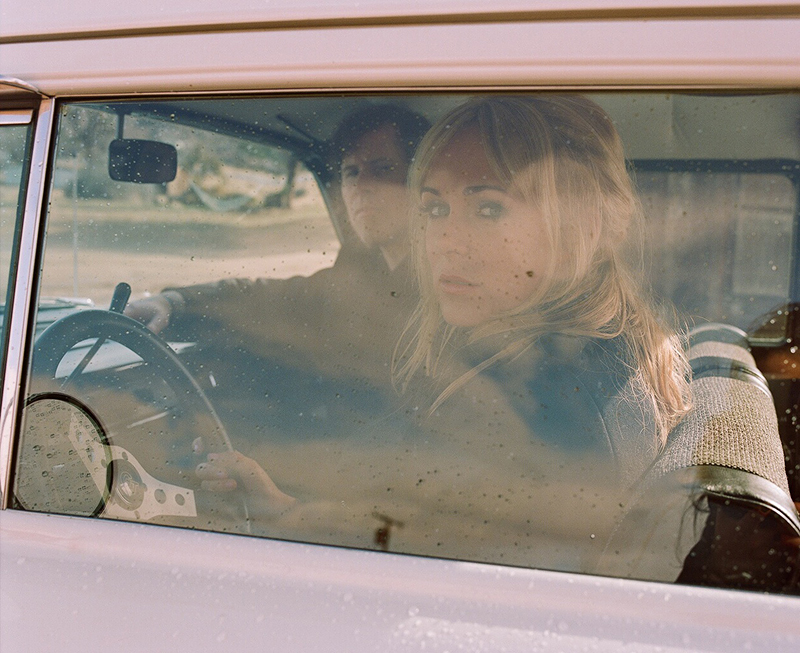Never underestimate the powers of the so-called “freak folk” movement. It’s made scraggly beards trendy, turned Renaissance Faires into viable weekend entertainment, and, perhaps most impressively, raised the dead. Witness last year’s resurrection of Vashti Bunyan, the all-but-forgotten English songstress coaxed out of three-plus decades of retirement by the sounds (and success) of such creative descendents as Devendra Banhart and Joanna Newsom; her Lookaftering—the follow-up to 1970’s then-ignored, now-beloved Just Another Diamond Day—was one of 2005’s most critically lauded albums.
Or witness last fall’s acclaimed, enthralling anthology Imaginational Anthem, which showcases acoustic guitar-centric instrumentals from the actual dead (John Fahey and Sandy Bull) and the still- living-but-remarkably-obscure (Harry Taussig and Max Ochs, cousin of protest folkie Phil Ochs), and stacks next to them a handful of relative newcomers (Jack Rose, Harris Newman, Kaki King) whose consistent championing of their fringe-dwelling forebears in the press—combined with similar efforts from hugely popular neo-folkies like Banhart—is likely what made the disc’s exhumations commercially feasible.
Of those hallowed eccentric-folk progenitors, it’s Fahey who seems to get the most love. His ethereal, experimental, sometimes dark vision has indeed become a staple of the “New Weird” scene, and his influence looms large over Imaginational Anthem, Volume Two; another all-acoustic, all-instrumental affair that mostly spotlights the newer crop of quirky folkies. Three of those artists are taking the music on the road with the Imaginational Anthem tour, which comes to the Tractor Tavern June 6: British 12-string wunderkid James Blackshaw, who bears an uncanny physical resemblance to Nick Drake; goth-folkie Sharron Kraus, who divides her time between Philadelphia and her native U.K.; and bearded Berkeleyite Sean Smith, a former rock-band guitarist who entered the folk scene somewhat by accident.
“A friend of mine was playing some fingerstyle guitar and he asked me to back him on some duets,” Smith explains. “He showed me some patterns and he explained how the style makes one player the whole band, playing the bass and the percussion and the melody by himself. That completely appealed to me, and then I just really got into it.”
The self-taught Blackshaw has a similar story. “I was really into indie-rock growing up, especially all that Sub Pop stuff. And then when I was 16, a friend of mine played John Fahey for me, and that was the pivotal moment,” he says. Through his introduction to Fahey, whom he saw perform in London two years before his death, he discovered Takoma and ultimately the late 12-string pioneer Robbie Basho, who inspired Blackshaw’s own incorporation of hypnotic drone, free jazz theory, and Indian, Arabic, and Far Eastern melodies into spellbinding and increasingly epic compositions.
Kraus’s path to vintage folk, meanwhile, was a fairly well-traveled one—it started at Led Zeppelin, progressed through Fairport Convention, and ultimately reached Fahey and Shirley Collins. At Oxford, she says, she found a pub where she could join in on folk sessions, but her love for Bauhaus and Nick Cave remained steadfast. “At the time I was learning this traditional folk stuff, I was also singing in a goth band,” she laughs. “I remember the owner of the pub, he also had a room that was a venue space, and when I played there with my band I think he was just really disappointed in me. You know, like, ‘What are you doing coming here and playing this rubbish?'”
Across her solo works and various collaborations, Kraus has found a way to merge both worlds, applying her clarion voice and guitar, banjo, clarinet, piano, and hurdy-gurdy skills to murder ballads and tragic romances that are as entrancing as they are somber.
While all three artists, naturally enough, dismiss the “freak folk” tag with a laugh, each admits to being grateful for the exposure the Imaginational Anthem series, and the movement’s current popularity, is bringing them, even as they remain wary of the pitfalls associated with any “scene.”
“I suppose I’m a bit worried that it’s fashionable at the moment,” says Blackshaw. “Y’know, just the way the media tends to pick up on things and create scenes and then eventually drops it like a hot potato,” says Blackshaw. “But the fact that people are interested and enthusiastic about the music right now is nothing but fantastic.”
Add Kraus: “I don’t know what it would be like to be Devendra. He’s got the weight of the whole thing on him, although he’s probably more competent at handling that than most of the rest of us would be. We’re just trying to take people on a journey.”








